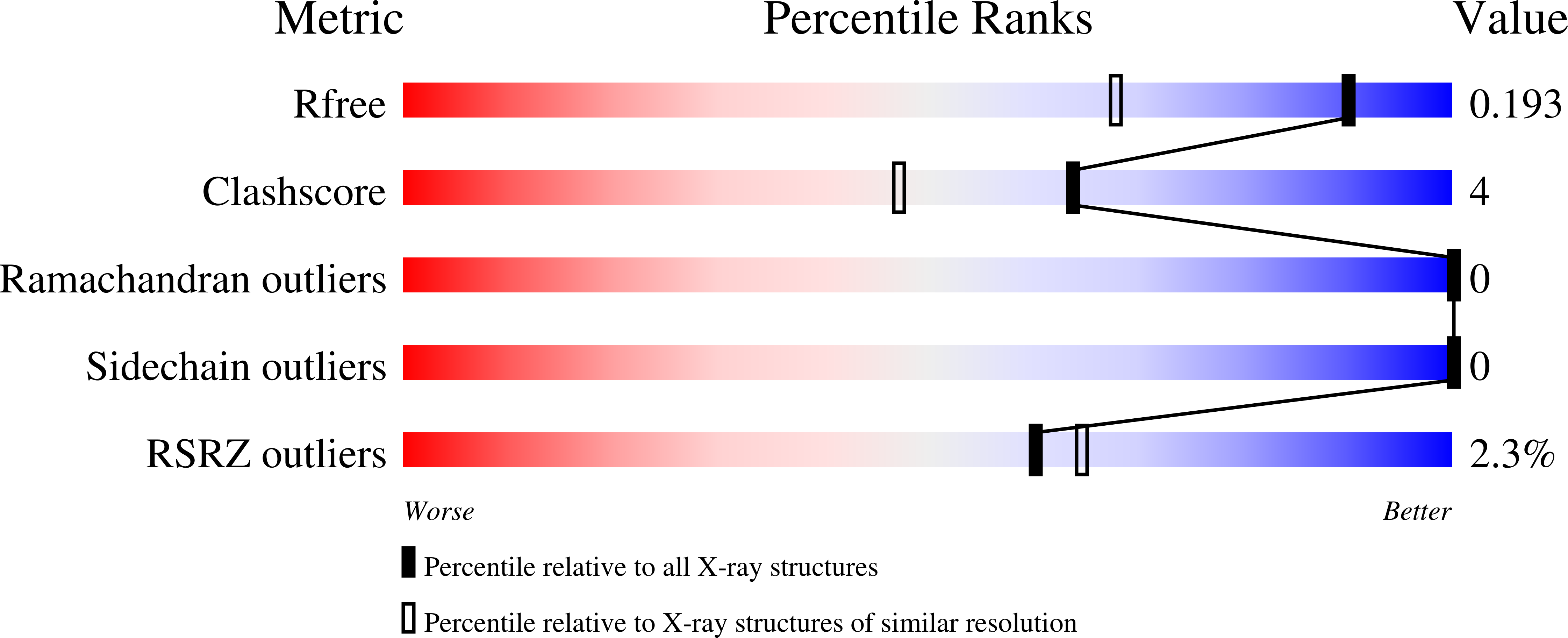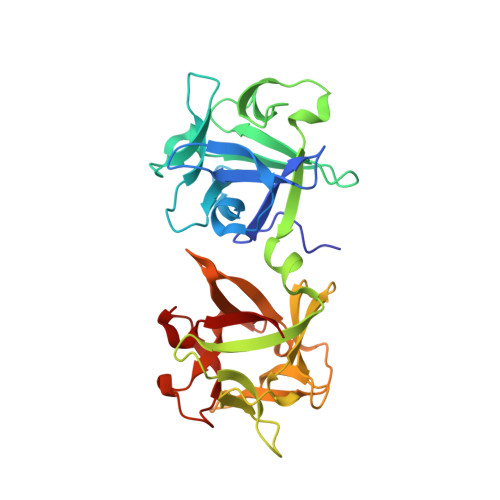Molecular diversity of the two sugar-binding sites of the beta-trefoil lectin HA33/C (HA1) from Clostridium botulinum type C neurotoxin
Nakamura, T., Tonozuka, T., Ito, S., Takeda, Y., Sato, R., Matsuo, I., Ito, Y., Oguma, K., Nishikawa, A.(2011) Arch Biochem Biophys 512: 69-77
- PubMed: 21640703
- DOI: https://doi.org/10.1016/j.abb.2011.05.012
- Primary Citation of Related Structures:
3AJ5, 3AJ6 - PubMed Abstract:
A critical role in internalizing the Clostridium botulinum neurotoxin into gastrointestinal cells is played by nontoxic components complexed with the toxin. One of the components, a β-trefoil lectin has been known as HA33 or HA1. The HA33 from C. botulinum type A (HA33/A) has been predicted to have a single sugar-binding site, while type C HA33 (HA33/C) has two sites. Here we constructed HA33/C mutants and evaluated the binding capacities of the individual sites through mucin-assay and isothermal titration calorimetry. The mutant W176A (site I knockout) had a K(d) value of 31.5mM for galactose (Gal) and 61.3mM for N-acetylgalactosamine (GalNAc), while the K(d) value for N-acetylneuraminic acid (Neu5Ac) was too high to be determined. In contrast, the double mutant N278A/Q279A (site II knockout) had a K(d) value of 11.8mM for Neu5Ac. We also determined the crystal structures of wild-type and the F179I mutant in complex with GalNAc at site II. The results suggest that site I of HA33/C is quite unique in that it mainly recognizes Neu5Ac, and site II seems less important for the lectin specificity. The architectures and the properties of the sugar-binding sites of HA33/C and HA33/A were shown to be drastically different.
Organizational Affiliation:
Department of Applied Biological Science, Tokyo University of Agriculture and Technology, 3-5-8, Saiwai-cho, Fuchu, Tokyo 183-8509, Japan.















